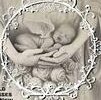When a person dies, their family members choose clothing to dress them in for their funeral. The choice of attire is often influenced by a number of factors including cultural norms, religious beliefs, and personal style. While the choice may seem daunting, with careful consideration and thoughtful planning, families can select attire that honors their loved one’s memory.
Traditionally, burial clothes lean towards formal attire. For men, this often means suits and ties and for women dresses and skirts. However, many people have more casual style preferences, and choosing burial clothing that reflects these preferences can be meaningful.
While the task of selecting burial clothing can be difficult, it’s important to remember that funeral attire should reflect the deceased’s personality and personal taste. It should also honor their final journey and respect any religious or cultural guidelines you may wish to follow.
When selecting burial clothing, it’s important to choose items that will be easy to put on. This will make the process for those who are grieving emotionally and physically as stress-free as possible. For this reason, it is often helpful to choose clothing that is lightweight. In addition, the fabric should be soft against the skin and comfortable to wear.
Burial gowns are designed to be easy for funeral directors and loved ones to dress the deceased in. They are similar to hospital gowns and may have a design that resembles a dressing gown or smart night gown. They have high necklines and long sleeves, which ensure that body blemishes caused by illness are not visible. They can be purchased for both men and women and are available in a variety of attractive fabrics and colors.
In addition to a burial gown, a shroud is another type of cloth that is used to wrap the deceased before cremation or burial. Shrouds are usually woven with linen and cotton, and can be filled, draped, or folded around the body. They can be customized with embroidery, lace, or beads to create an elegant appearance that is appropriate for a service.
An antebellum burial costume might have looked a bit like a bride. In 1868, Helen Edwards wrote in her diary that a 20-year-old woman who died at a Springfield, Illinois, church was dressed “in a bridal gown of the finest white merino and with a rouche of tulle about her neck.”
Historically, families have dressed their loved ones for the funeral service out of love and respect. In the past, this could have included a tailored suit or a favorite dress. For some cultures, however, a shroud was considered to be more respectful.
Whether you decide to choose a burial gown or a shroud, it’s important to consult with your spiritual leader or other knowledgeable individuals to ensure that you are choosing the best clothing for your loved one. Then, you can feel confident that your decisions are honoring their wishes and celebrating their life.
